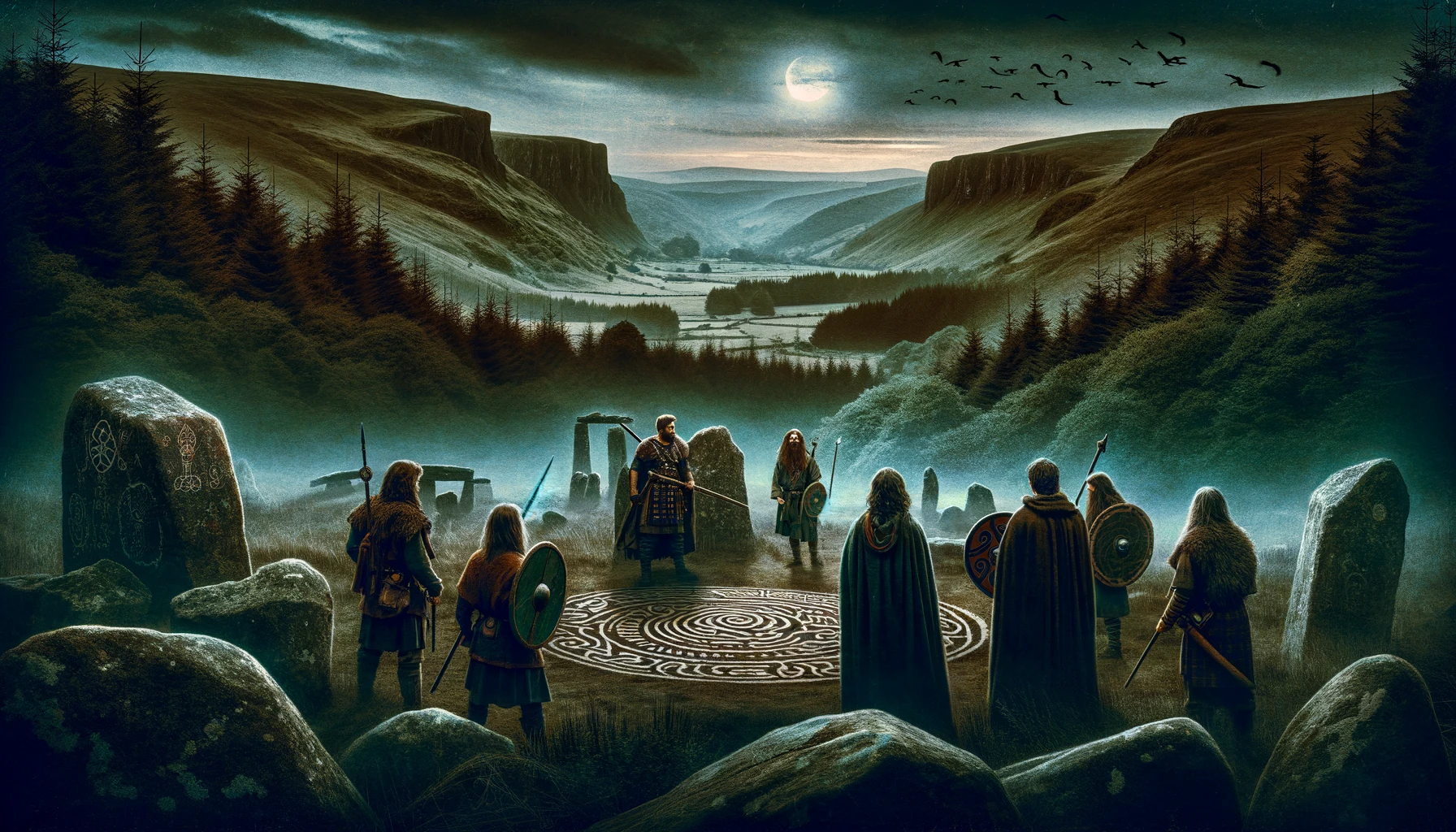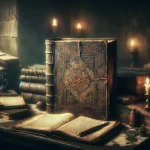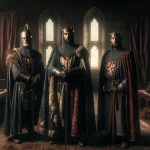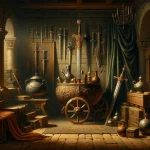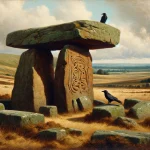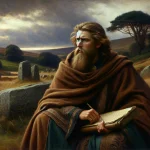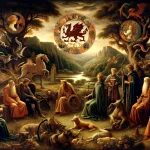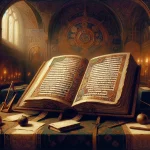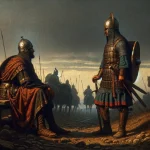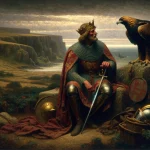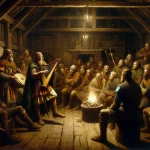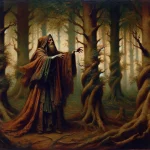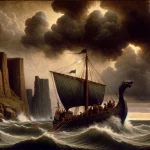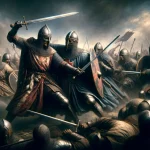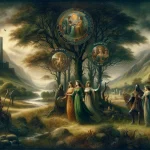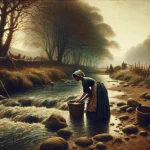Welsh mythology is a fascinating amalgamation of local Welsh folk traditions and those developed by the Celtic Britons more broadly, shaped before the close of the first millennium. In societies where oral tradition was predominant, this rich tapestry of mythology and history was primarily preserved and transmitted orally by skilled individuals such as the druids (Welsh: derwyddon). Fortunately, a considerable portion of this mythology and historical narrative has been conserved in medieval Welsh manuscripts and writings.
Welsh Manuscripts
The Black Book of Carmarthen, Red Book of Hergest, White Book of Rhydderch, Book of Aneirin, and Book of Taliesin are five of the most significant medieval Welsh manuscripts, each playing a crucial role in preserving Welsh history, mythology, and poetry.
The Black Book of Carmarthen: Believed to be the earliest surviving manuscript written entirely in Welsh, dating from the 13th century. It is named after the town of Carmarthen and is notable for its black binding. The book contains a mix of religious and secular poetry, including some of the earliest references to King Arthur and Merlin (Myrddin). The text provides valuable insights into the Welsh oral tradition before its compilation.
The Red Book of Hergest: Compiled in the late 14th century, this manuscript is one of the most important sources of medieval Welsh literature. It is named after its red leather cover. The Red Book of Hergest contains a collection of prose and poetry, including a version of the Mabinogion, a collection of ancient Welsh tales, as well as historical and religious texts. It offers a comprehensive view of Welsh folklore, legends, and history.
The White Book of Rhydderch: Dating from the mid-14th century, it is one of the earliest compilations of Welsh prose texts, sharing much content with the Red Book of Hergest, including material related to the Mabinogion. The manuscript’s name comes from its original white vellum cover. It is crucial for understanding the development of early Welsh prose.
The Book of Aneirin: This manuscript is believed to date back to the 13th century and is primarily associated with the poet Aneirin. It contains the epic poem “Y Gododdin,” which commemorates the Battle of Catraeth and is one of the earliest known Welsh poems. The book is invaluable for its depiction of early Welsh heroic poetry.
The Book of Taliesin: Dating from the early 14th century, this manuscript is attributed to the legendary bard Taliesin. It comprises a collection of poems, including some of the earliest Welsh poetry in existence, covering a wide range of topics from the historical and political to the mythological.
Together, these manuscripts form a cornerstone of Welsh cultural heritage, offering unparalleled insights into medieval Welsh society, its belief systems, literary styles, and historical events. They are crucial for understanding the development of Welsh literature and the preservation of Celtic mythology.
Welsh Poems, Texts and Tales
The above manuscripts contain welsh poems, texts, and tales which can be combined with standalone texts. They can also be grouped in the following ways.
Early Welsh Poetry: This includes some of the oldest poetry in Europe, dating back to the 6th century. It features works by poets like Taliesin and Aneirin, who wrote primarily in an oral tradition. These poems often focus on themes of battle, heroism, and the natural world, with notable works such as “Y Gododdin,” a series of elegies for warriors who died in battle.
- Geraint son of Erbin
- The Battle of the Trees
- The Death-song of Uther Pendragon
- The Death-song of Aeddon
- Y Gododdin
The Mabinogion: This is a collection of eleven prose stories from medieval Welsh manuscripts, including the Red Book of Hergest and the White Book of Rhydderch. The Four Branches of the Mabinogi are mythological tales that blend Celtic pagan beliefs with elements of medieval Christian thought.
Arthurian Literature: Welsh texts contribute significantly to Arthurian legends. Works like “Breuddwyd Rhonabwy” (The Dream of Rhonabwy) offer unique Welsh perspectives on the Arthurian world and “Culhwch and Olwen,” one of the earliest Arthurian tales.
Religious Texts and Saints’ Lives: Medieval Welsh literature also includes religious texts, such as the lives of saints. These texts often contain miraculous and fantastical elements, reflecting the syncretism of Christian and indigenous beliefs.
Historical Chronicles: Welsh literature includes historical chronicles like the “Annales Cambriae” and “Brut y Tywysogion” (Chronicle of the Princes), documenting events in Wales and providing historical context to the legends and myths.
Poetry of the Gogynfeirdd and Cywydd Poets: In the later medieval period, the Gogynfeirdd (court poets) and Cywydd poets developed more complex forms of poetry, celebrating the deeds of Welsh princes and the aristocracy.
Folk Tales and Legends: These include a rich tradition of folk tales and oral narratives, some of which were later collected in works like “The Welsh Fairy Book.” These stories often feature elements of the supernatural, fairy beings, and moral lessons.
